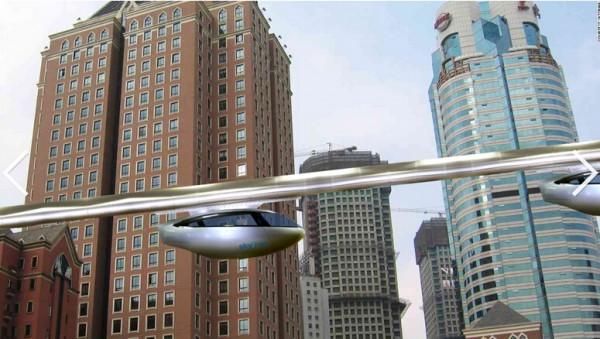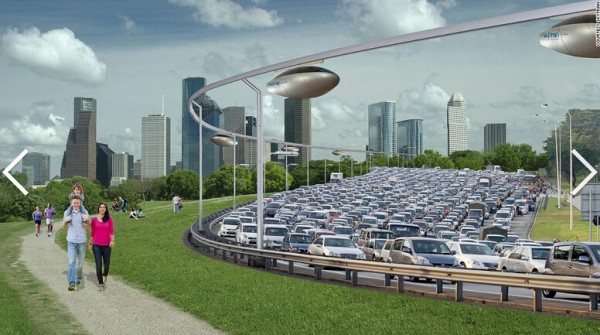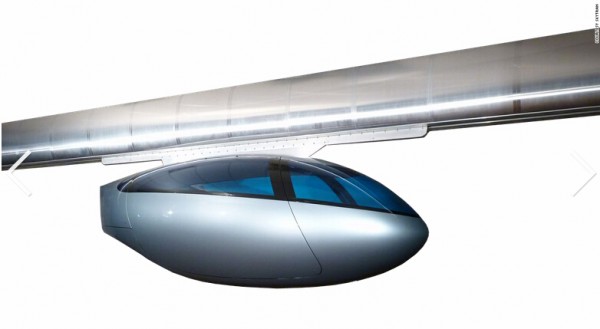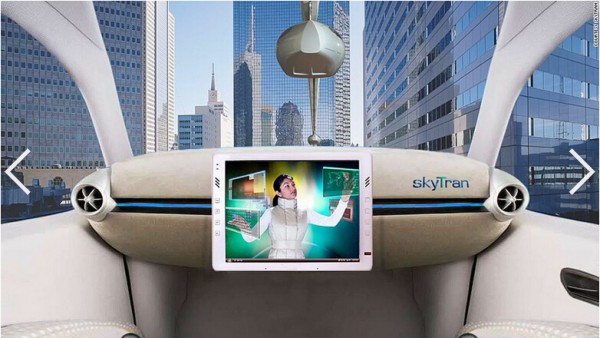





Air Car plans to build a grid-like system from above the ground and use a variety of “exit gates†as “stations†to enable passengers who have previously left reservation information in the database system to successfully enjoy the rental from the sky. Car service.
As long as you tap the phone, a fully-controlled maglev car that looks like a pea pod appears in front of you. It will lead you to leap over the city and head for your destination.
"The next major innovation will be the automatic checkout function," said John Cole, chief technology officer and head of Airbus. "As something is automated, the rigid transportation system will gradually disappear." Behind the scenes, no matter where you want to go, just one word, the computer will automatically send me to the destination - this is a seamless process."
Air Car Company claims that the use of new technologies only requires one-third of the current energy consumption of these hybrid vehicles because the weight of the aerial vehicles is only 300 pounds.
The first pilot of Airbus will be located at Israeli Aerospace Industries on the outskirts of Tel Aviv. A 400-meter trial system will be completed by the end of 2015. The company hopes that within 3 years they can build up to 20 kilometers of rails to serve the public transportation system in Tel Aviv. They also hope to expand their business to Europe and Asia.
The report said that the construction of traditional urban roads and railways is both expensive and requires construction land - which is a precious resource for many cities. One way to save land is to transfer to the bottom - the subway. Although it does facilitate the travel of people in many parts of the world, its high construction costs are a headache.
“We can build the track over the sidewalks, buildings and almost anywhere and set up a large number of stop sites for passengers to choose from,†said Jerry Sanders, chief executive of Air Cars. He calculated that the entire system would cost 10 million U.S. dollars per kilometer. But is this really the right direction of development?
Joe Dignan is a city expert from the United Kingdom. In his view, the automated and personalized transportation system implemented in the air vehicle will have a bright future. "The point of the matter is, will you use it? I don't know if you will. I will definitely use it for me anyway."
"I can foresee how useful this is for emerging economies, especially those emerging cities."
Ryan Chin is leading an urban research project at the Massachusetts Institute of Technology. He said, "The private rapid transit system like this has been a relatively rare place for some modes of transport in the past few years. It may be more useful in places like the University Campus and corporate parks. After all, they will not have airports. Expensive facilities; there is the Expo, and things like Shanghai and Dubai are also more meaningful."
But Qin worry that such a transportation system only adds extra infrastructure to the environment. “Considering that people need a lot of stations to get in and out of the car, the construction and operation of air vehicle facilities is not a cost-effective solution. Moreover, in some places there is not enough urban density, which may require a long journey for passengers. Go to the station or arrive at the destination. Eventually they may still depend on cars."
However, for Saunders, if the plan goes smoothly, office workers in the congested cities can completely abandon their cars and timetables. They only need to rely on their tailor-made transportation system to formulate their travel plan. At that time, they no longer had to endure the various problems that they now travel to and from work. “In today’s society, being trapped in the traffic stream is the most stressful and heart-rending.†Saunders said, “We sincerely hope to make people’s lives better and more quality, and our high-speed traffic system is based on our The answer given by this wish."
Peristaltic pump
There are a few plaster sprayers that have a peristaltic pump (a tube squeezed by rollers) which also requires compressed air to produce a spray. These types of plaster sprayer can also spray textured coatings with particle sizes up to about 3mm diameter, providing that they are not solvent based.
Piston pump
Newer types of plaster sprayer have a piston pump, which has sufficient pressure to spray smooth (untextured) plaster without compressed air. Full airless pumps are sometimes used to spray smooth plaster, although they are not ideal as the flow rate is too low for volume projects; however, they can be used to spray solvent-based plasters.
Air operated piston type supply pumps can put out as much as 27 gpm. Like the Graco Bulldog 10:1 at about 9 gpm and the Lincoln Pile driver 5:1 at about 27 gpm. These flow-rates are calculated at a maximum of 120 cfm air supply. Material supply hoses are medium pressure at about 600 psi. These pumps are material supply pumps only and additional air is required at the Spray Gun to propel the material to the surface. These guns are usually an internal mixture type guns where the material and air exits the gun together.
Pump Assembly,Piston Pump Putty Sprayer,Electric Piston Pump Sprayer,Hydraulic Pump Assembly
Fuzhou HVBAN Mechanical Equipment Co., Ltd. , http://www.hi-sprayer.com